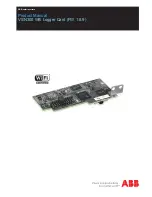
CRBasic instructions for internet communications include:
l
EmailRelay()
l
EmailSend()
l
EmailRecv()
l
FTPClient()
l
HTTPGet()
l
HTTPOut()
l
HTTPPost()
l
HTTPPut
l
IPInfo()
l
PPPOpen()
l
PPPClose()
l
TCPOpen()
l
TCPClose()
Once the hardware has been configured, PakBus communications over TCP/IP are possible.
These functions include the following:
l
Sending programs
l
Retrieving programs
l
Setting the data logger clock
l
Collecting data
l
Displaying the current record in a data table
Data logger callback to LoggerNet and data logger-to-data logger communications are also
possible over TCP/IP. For details and example programs see the CRBasic help.
7.3.1 IP address
When connected to a server with a list of IP addresses available for assignment, the data logger
will automatically request and obtain an IP address through DHCP. Once the address is assigned,
look in the Settings Editor: Ethernet | {information box} to see the assigned IP address.
The CR6 provides a DNS client that can query a DNS server to determine if an IP address has
been mapped to a hostname. If it has, then the hostname can be used interchangeably with the
IP address in some data logger instructions.
7.3.2 HTTPS
The data logger has the ability to act as an HTTPS server. This can be configured using Device
Configuration Utility.
7.4 DNP3 communications
DNP3 is designed to optimize transmission of data and control commands from a master
computer to one or more remote devices or outstations. The data logger allows DNP3
communications on all available communications ports. CRBasic DNP3 instructions include:
7. Communications protocols
102
















































